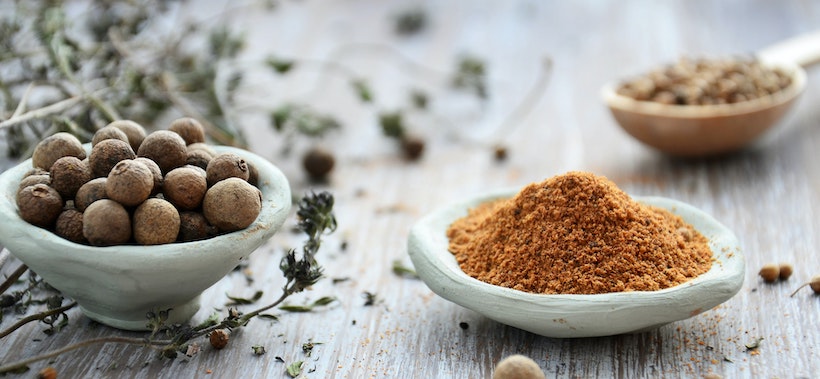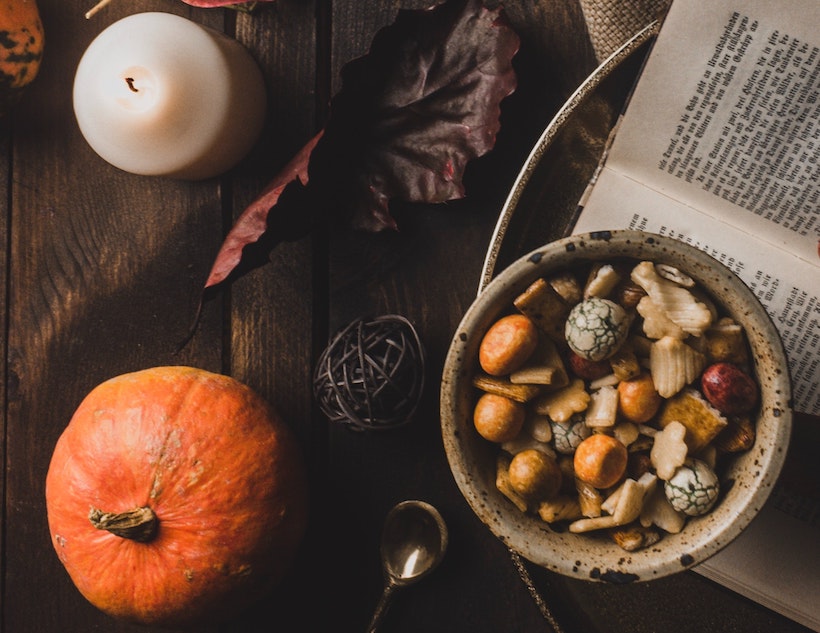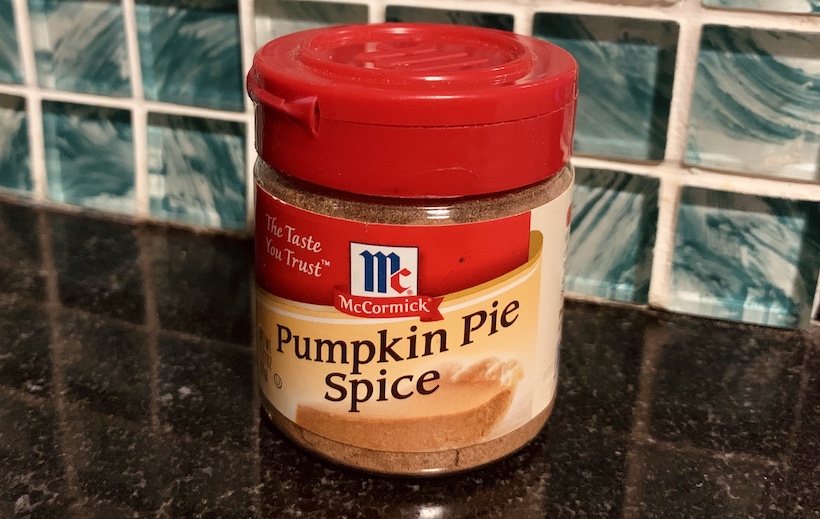Nowadays oft-associated with Ugg Boots and the autumn season, the longer history of pumpkin spice reveals the evolution of pumpkin and spice combinations used throughout the past – and, let's face it, into the future. This seasonal spice combination evokes thoughts of our past and present – and gives the nod to our future.
Whenever fall rolls around, pumpkin spice can be found everywhere, from lattes to our scented candles. 66 percent of Americans use or consume at least one pumpkin spice product per week during autumn.
Although this comforting spice blend is synonymous with fall, it doesn't contain much (or any) pumpkin at all. Either way, pumpkin spice is a medley of warm spices that people have been using to flavor their food and fuel their souls for centuries.

Pumpkin spice in its current form is as American as apple pie: a delicious blend of cloves, ginger, nutmeg, cinnamon, and allspice. You can find it virtually anywhere year-round, but it's especially common during the fall and winter months. On any day you peruse the supermarket aisle, you will find jars of the traditional spice combination, plenty of products that contain elements of pumpkin spice, or the spice mix itself.
It's hard to imagine, but the small jars of pumpkin spice that we see on store shelves have quite the checkered past. The history of pumpkin spice is heavily related to the history of conquered countries and the spice trade. It involves coups, conflicts, and a desire to rule specific destinations associated with these warm and delicious exotic spices.
You know about the spice wars, but the wars over nutmeg were especially nasty.
Nutmeg was such a coveted spice that the Dutch traded some of its most valuable property – the island of Manhattan(!) – to corner its supply. Similarly, people from Oman used cloves as currency and considered them to be as precious as oil. The demand for cinnamon caused wars between the Dutch and Portuguese in 1638.
Many civilizations consumed some gourd family members – but our hero today is the sweet, orange variety of winter squash we know as the pumpkin. And the history of the pumpkin is a long one. Ancient Mexicans ate savory versions of pumpkin, as did the Incans and many North American Native American peoples.
It wasn't until the colonial era in American that 'bland' pumpkin started to pair with sweeter food. One of the first examples of pumpkin spice flavoring came from New England when the chef cooked down the mashed pumpkin and scented it with butter and spice. It was a notable time in pumpkin spice history – it opened up an opportunity for pumpkin to be transformed into a dessert.
Today, far more people eat sweet pumpkin pie as opposed to classic savory pumpkin dishes, and the popularity of pumpkin pie spice has skyrocketed in recent years.

Once pumpkin became more than just a savory dish, pumpkin spice started to kick off. And a lot of that shift from savory to sweet is reflected in the history of pumpkin pie. One of the first pies featured in Amelia Simmons's American Cookery included many vital pie ingredients that we still recognize today – and some that have gone out of fashion (like molasses).
An interesting footnote: these early pumpkin pies often didn't have crusts. Many cooks served them right inside the pumpkins themselves, mixing the warm stewed pumpkin with honey, pumpkin spices, and milk. They then baked the pumpkin shells in ashes until the contents were warm.
Some cooks paired early pumpkin pie with apples or rosemary, and occasionally even spices like thyme. These variations sound delicious, but they are much different from the sweeter versions we see today. Over time, pumpkin became the pumpkin pie's sole star, edging out apples, other fruits, or other savory spices.
Pumpkin pie is nothing new, and the components of pumpkin pie spice have a long history, too, but pairing them together and marketing the two is a relatively new strategy.
One of the first companies to take pumpkin pie spice and make it popular for the masses was McCormick. During the 1960s, the spice giant got the brilliant idea of mixing all of these flavors and making it even easier for people to make pumpkin pies at home. The flavor combination exploded and is now a fall household favorite.
Do you have a pre-mixed pumpkin pie spice in your kitchen? I do, and here's a glamor shot:

Interestingly enough, pumpkin spice is not just relegated to pies or even to the kitchen. Pumpkin spice is a leading fall flavor and smell, and you can find its comforting scent and taste in food products across the spectrum. There are pumpkin spice flavored peeps and Twinkies, as well as a room spray, candles, and air fresheners.
One of the most popular places to find pumpkin spice these days is the famous pumpkin spice latte. Starbucks pioneered the trend during the late 1990s. Since then, the comforting blend found its way into other coffee drinks and additional beverages, including pumpkin beer and tea.
Pumpkin spice is not going anywhere anytime soon, and it's clear that when the leaves start falling somewhere in the Northern Hemisphere, a pumpkin spice beverage will appear soon.
Today, pumpkin spice alone is a booming near-billion dollar market with no signs of shrinking anytime soon. As more people get on the pumpkin spice train, it's clear that the history of pumpkin spice in the twenty-first century will be one of product placement and intriguing and inventive food additives.
Although nobody can say for sure, it's tough to imagine pumpkin spice's popularity slowing. Nowadays, there's even pumpkin spice SPAM on the market!
Pumpkin spice has evolved from its original state on spice shelves. From flavoring traditional pies to spicing up your favorite latte, pumpkin spice is a welcome addition to just about all of our favorite products—even the non-edible ones.
One of the most interesting and controversial aspects of pumpkin spice's place in culture is its association with "basic" culture. Essentially, a stereotype equates the sort of person – generally a young woman – who drinks pumpkin-spiced lattes as a person who stereotypically wears Ugg boots and leggings.
Some people have gone so far as to embrace the stereotype, leaning into the stereotype and celebrating this autumnal tradition for all that it's worth.
"Basic" culture aside, pumpkin spice has truly ingratiated itself in the worldwide culture, appearing in all sorts of music, movies, and social media. The pumpkin spice latte even has its own Verified Twitter feed, cementing pumpkin spice's place in the virtual world on social media. It's clear that pumpkin spice is a pop culture trend and more than just a flavor combination – it's a lifestyle.
What's next for the history of pumpkin spice? Right now, you can find this spice combination in just about every food product, from coffee to SPAM to protein powder. Pumpkin-flavored beers are trendy and rival other autumn blends.
One of the most exciting areas pumpkin spice (and pumpkin itself) is becoming more prominent is in the beauty industry. Pumpkin seems to be the new hot product on the shelves, and maybe our skin will love it as much as our taste buds do!
One thing is for sure: pumpkin spice is sticking around for the long haul. We keep finding new ways to use this traditional spice blend, and we can't overstate its connection with autumn. Expect to see more fall staples like candles, room sprays, and scented oils, because there is something undeniably comforting and soothing about pumpkin spice.
Oh, and enjoy your pumpkin spice latte.